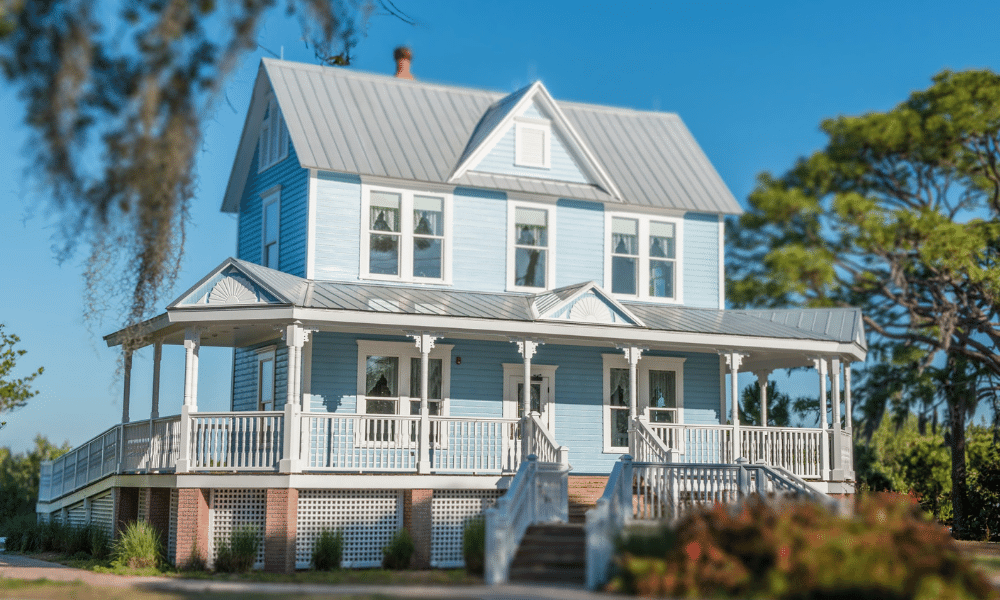Perhaps you have been looking at a Federal-style townhouse for sale in Savannah, Georgia. Or maybe it’s a mid-century modern with a famous story in Palm Springs. There are good investment opportunities when buying a historic home, but first, you need to consider a few things before you put down a deposit on a home or begin renovation plans.
What is a historic house?
The National Register of Historic Places assesses properties based on their age, integrity, and significance. These properties can be private homes, commercial buildings, or landmarks.
- Age: Property must be at least 50 years of age (exceptions may apply if it has a high-value significance).
- Integrity: The property is largely preserved in its original appearance and historical material.
- Significance: The property has historical connections to people, events, or developments that are significant in history. This could include engineering, landscape history, or architectural history.
Most jurisdiction is at the local level, not at the federal level. There are no restrictions on being included in the National Register of Historic Places. Check the local ordinances of your town or city and contact the state or local preservation offices. Ryan Arvay is the Historic Properties Coordinator at Historic Savannah Foundation. He says, “All preservation must be local.”
Here are some things to think about before buying a house. These include financial considerations, guidelines, and your personal needs.

Determine if a historical home is right for your needs
Contrary to other home-buying experiences, falling in love with a historic property because of its location, price, and charm doesn’t necessarily mean that it is the right purchase.
Ken Lyon, Palm Springs’ Associate City Planner and Historic Preservation officer, reminded potential buyers to look elsewhere if they don’t want to learn the area’s history or want to renovate an older home. It is important to take care of a historic home, including maintaining it well and paying attention to the unique aspects that make it special.
If you are looking to buy a historic house, it may be the right choice for you if you want to:
Conserve the character of your historic home.
A historic home’s charm can be found in small rooms, undulating floors and carved posts. Arvay states that the best buyer for a historic home is someone who values architecture, history and craftsmanship.
Follow these guidelines.
Lyon and Arvay both stress the importance to be familiar with your local jurisdiction. Some towns or preservation offices have specific guidelines that dictate what modifications can be made to your home.
The exterior design and architectural details of a home may be considered by review boards. They might also consider the color, siding material and window styles, roofing, and other factors. For example, a historic district in Long Beach, California encourages the preservation of unique features, finishes and construction techniques essential to a building’s personality. Any proposed changes must be compatible with the architectural period of the building for approval.
You can share your home with others.
A historic home is unique because it is part of an even greater story. Lyon says that owning a historic house should be about pride in ownership. People quickly lose sight of the intrinsic value of a home, but the joy and pride that comes with living there are unmeasurable. You can share your passion with others by using your home to support charities or organize tours.
If you are looking to buy a historic house, it may not be the right choice if:
It is a fixer-upper you can renovate.
Arvay says, “If you don’t love open floor plans and a modern aesthetic, then please don’t purchase one.” Your requirements might confine you. Historic homes are limited. It is best to preserve historic homes and not remove the inside.

Modify your home without any restrictions.
You might find a city ordinance that says you have to restore wood sash windows rather than replace them. Don’t even consider adding picture windows, sliding doors, or skylights, depending on where you live. Michelle Drum, a broker associate at Gustave White Sotheby’s International Realty, Newport, Rhode Island has received buyers who want to know how to add modern amenities like central air conditioning or if it is possible to open walls to create an open-plan floor plan.
Lyon says that while some jurisdictions cannot dictate what happens after you cross the threshold but Lyon also states that there is an additional responsibility for “proper maintenance of the historic characteristics” of the area.
Spend more time and money on things that are not your primary concern.
Although it doesn’t take up your entire life, owning a historic house won’t make you rich. It will however cost you money and time. Due to the pandemic, costs for remodeling, lumber, materials, and labor have risen dramatically.
Drum also explains that certain modifications may require board approval. Drum says “If you have a time constraint, often an architecture or lawyer needs to be involved and this is expensive and requires money.” Additionally, your local jurisdiction may require you to maintain your exterior on a stricter schedule than you would like.
Financial considerations when buying a historic home
There are many financial considerations that must be considered before purchasing a historic house, from overcoming structural problems to federal tax cuts.

Benefits
Historic homeowners may be eligible for both state and federal tax credits. Lyon suggests that buyers conduct thorough research to find out all available financial incentives, such as tax reduction programs and low-interest loans for historic properties.
Heritage Consulting Group reports that 37 states offer tax incentives to help with the rehabilitation of historical properties.
Many states offer homeowners a 25% credit, while others give credit if the property produces income. New York provides an additional 25% credit for projects involving a barn. South Carolina offers an additional 25% credit for mill rehabilitation. For more information, you can contact your state’s historic preservation officer.
The federal Historic Rehabilitation Tax Credit (HTC), which provides a credit of 20 percent for costs incurred on historical projects, is another option. In 2017, the Tax Cuts and Jobs Act changed the program. The credit must be used for at least five years. For more information, consult a qualified tax credit consultant.
